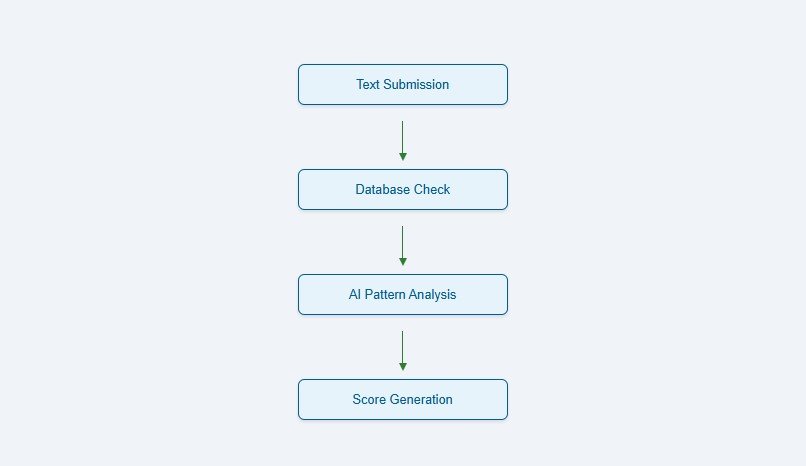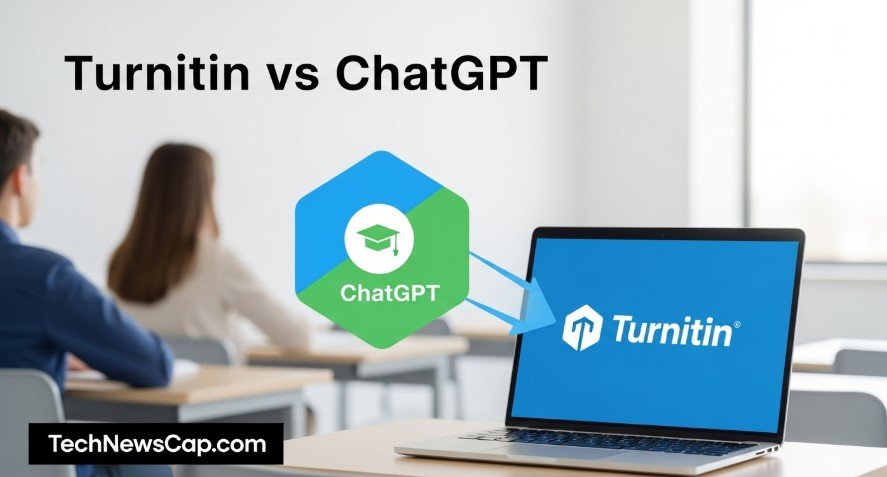In today’s world, AI tools like ChatGPT help students write essays and complete assignments. But schools use tools like Turnitin to check if work is original. Can Turnitin detect ChatGPT? Yes, it can, with a reported 98% accuracy as of July 2025. This article explains how Turnitin spots AI-generated text, its reliability, limitations, and what it means for students and teachers. This guide offers practical insights for TechNewsCap.com readers.
What Is Turnitin’s AI Detection?
Turnitin is a plagiarism checker used by over 10,700 schools worldwide, serving 2.1 million educators and 62 million students. Since April 2023, it has included AI detection to identify text from tools like ChatGPT. This feature helps ensure students submit their own work, maintaining academic fairness.
How Does Turnitin Detect ChatGPT?
Turnitin uses advanced technology to spot AI-generated text. Here’s how it works:
- Database Comparison: It checks submissions against a massive database of academic papers, journals, and web content to find matches.
- AI Pattern Analysis: Machine learning identifies patterns common in AI text, like repetitive sentence structures or word choices (e.g., ChatGPT’s use of phrases like “in today’s world”).
- Similarity Score: Turnitin assigns a score from 0% to 100% to show the likelihood of AI use. It highlights specific sentences suspected of being AI-generated.
- Transformer Model: A deep-learning system analyzes word sequence probabilities, which are more predictable in AI text than human writing.
This combination makes Turnitin effective at detecting ChatGPT, including versions like GPT-3.5 and GPT-4.

How Accurate Is Turnitin’s AI Detection?
Turnitin claims 98% accuracy in detecting AI-generated content, based on its training with academic writing. However, it’s not perfect. Here are key points:
- High Accuracy: It correctly identifies most AI text, especially from tools like ChatGPT, due to its specialized algorithms.
- False Positives: About 1% of human-written work may be flagged as AI-generated. For example, a 2023 Washington Post test found Turnitin wrongly flagged 8% of a student’s original essay.
- False Negatives: Heavily edited or paraphrased AI text can sometimes go undetected, especially with advanced models like GPT-4.
Educators should use results as a guide, not proof, to avoid unfair judgments.
Can Students Bypass Turnitin’s Detection?
Some students try to avoid detection by altering AI-generated text. Common methods include:
- Paraphrasing: Rewriting ChatGPT output to change sentence structure or words.
- Short Sentences: Breaking text into shorter sentences to disrupt AI patterns.
- Mixing Content: Combining AI text with original writing to lower the AI score.
- Using Tools: Tools like QuillBot rephrase text, but Turnitin can still detect some patterns.
A Reddit user reported passing Turnitin by using short sentences and personal notes, but another was flagged despite edits. These methods raise ethical issues, as using AI to complete assignments without disclosure is often considered cheating.
Limitations of Turnitin’s AI Detection
Turnitin’s system has challenges:
- False Positives: Human work, especially in structured fields like economics, may be flagged due to consistent writing styles.
- Evolving AI: Advanced models like GPT-4 produce less predictable text, making detection harder.
- Non-Sentence Formats: Bullet points, lists, or tables are harder to analyze, reducing detection accuracy.
A 2024 Turnitin blog post noted that 9.9 million of 280 million papers since April 2023 contained at least 80% AI text, showing the scale of the challenge. Educators must balance detection with fair judgment.
What Does This Mean for Students and Educators?
For students, using ChatGPT responsibly is key. Use it for brainstorming or outlines, but write final drafts yourself. If flagged, provide drafts or notes to prove your work. For educators, combine Turnitin with manual checks, like reviewing a student’s writing history, to ensure fairness. Schools should set clear AI use policies to guide both groups.
Learn more about responsible AI use in How to Humanize ChatGPT Content.
The Future of AI Detection in Education
As AI tools advance, so does detection technology. Turnitin plans updates in 2025 to tackle new models like ChatGPT-4o. Schools are also rethinking assignments to focus on personal reflection or in-class tasks, which AI struggles to mimic. A 2025 Turnitin survey found 11% of student papers had at least 20% AI text, highlighting the need for ongoing solutions.
Explore how other platforms handle AI detection in Can Blackboard Detect ChatGPT?.
Conclusion
Turnitin can detect ChatGPT with high accuracy, using database comparisons and AI pattern analysis. However, false positives and evolving AI tech create challenges. Students should use AI as a tool for learning, not a shortcut, to avoid ethical issues. Educators must interpret results carefully to maintain fairness. As AI and detection tools evolve, clear policies and responsible use will shape the future of education.
Check out Can Canvas Detect ChatGPT? for more on AI detection in learning platforms.
FAQs
Can Turnitin detect paraphrased ChatGPT content?
Yes, it can detect paraphrased text if AI patterns remain. Extensive edits may lower detection chances, but ethical concerns persist.
What if my work is falsely flagged?
Show drafts, notes, or version history to your teacher. Open communication can resolve issues.
How can educators use Turnitin fairly?
Combine Turnitin results with manual checks and clear AI policies to ensure fair judgments.
